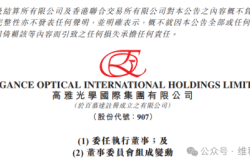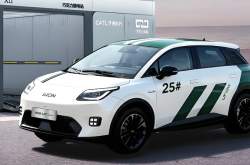Can NIO Auto Still Control Its Own Destiny? | Observations
![]() 12/31 2024
12/31 2024
![]() 655
655

Original by Dianyoushu Digital Economy Studio
Author | Uncle You
WeChat ID | yds_sh
The announcement of JiYue Auto's dissolution sparked a storm, setting off a 'butterfly effect' among automakers at the end of 2024.
In the supply chain, JiYue's unpaid debts became a ticking time bomb, making suppliers cautious, driving up procurement costs, and passing the pressure on to OEMs. On the capital front, rumors swirled that 'Baidu had long been dissatisfied with JiYue, while Geely chose to withdraw from the fierce competition to reevaluate its brand system.' Consumers, holding their car purchase funds, flocked to leading brands, leaving tail-end automakers struggling with shrinking market shares. Sales and financial performance became crucial metrics for 'new forces.' After a decade of navigating the industry, new energy vehicle makers now face stringent capital requirements, necessitating profitability, self-financing ability, and market prospects.
Looking back at NIO Auto in 2024, an early explorer in the new energy vehicle field, it finds itself deeply entrenched in difficulties. The CEO has resigned, and the founder has retaken the reins, but numerous predicaments remain concealed. Unpaid wages, layoffs, and store closures have been followed by negative news. NIO Auto's future path is shrouded in uncertainty.

NIO Auto: From 'Most Unfortunate' to 'Dark Horse'?
The 'fiery new force era' began in 2014 with NIO Auto, as Li Bin entered the market with funding from Tencent and others, offering high-end services and smart electric vehicles, outlining an ambitious blueprint. Xiaopeng Motors, led by He Xiaopeng and a team from GAC, prioritized intelligent technology, aiming to lead in autonomous driving. Li Auto took a unique approach, betting on extended-range technology, and the prototype of the Li ONE emerged. At this time, NIO Auto's predecessor, Hozon Auto, was quietly established in Tongxiang City, Zhejiang Province.
Fang Yunzhou, the founder of NIO Auto, is a seasoned veteran of the new energy industry with a profound background. In its early days, NIO Auto kept a low profile with minimal 'buzz' but 'quietly thrived': with a clear strategy, it focused on the 'B-end + low-end' market to boost sales. In 2018, NIO Auto launched its first model, the NIO N01, primarily targeting the B-end ride-hailing market. Over the next two years, the NIO N01 sold a total of 15,000 units. In the same year, NIO introduced the ES8, a high-performance pure electric SUV with a unique design and smart features, and experience stores sprouted across the country. NIO Day events brought users closer to the brand. Xiaopeng Motors unveiled the G3 at CES, boasting comprehensive smart connectivity features. Li Auto delved deeply into extended-range technology, and the Li ONE was poised for launch, frequently appearing at auto shows. It seemed like China's automotive industry was buzzing that year.
Subsequently, NIO Auto introduced the NIO U and NIO V models. The NIO U was priced around 150,000 yuan, while the NIO V was priced below 100,000 yuan. Leveraging large space and long range, NIO Auto successfully penetrated the ride-hailing market and gained a foothold in second- and third-tier cities. However, this strategy posed a problem: the product's advantages were not apparent, mainly relying on low prices to gain market share. This led consumers to perceive NIO Auto as a 'low-end car,' and profitability was not ideal.
By 2022, new energy vehicle makers had entered fierce industry competition. NIO delivered over 15,000 vehicles per month, accumulating over 120,000 for the year, a year-on-year increase of 34%, with new technological patents adding luster. Xiaopeng Motors saw a 94% month-on-month surge in December deliveries, spending over 5.2 billion yuan on R&D throughout the year, focusing on intelligent driving and smart cockpits. Li Auto launched three L series models, delivering over 20,000 vehicles in a single month, with a nearly 50% year-on-year increase and over 6.7 billion yuan invested in R&D, spanning a sales network of 121 cities. NIO Auto topped annual sales, with a year-on-year increase of 118%, unveiling new models on the Shanhai platform, and its brand influence continued to rise.
It's worth mentioning that although NIO Auto sold over 150,000 vehicles in 2022, it also incurred a net loss of 6.919 billion yuan, averaging a loss of nearly 46,000 yuan per vehicle sold. At this point, senior executives even blamed the NIO Auto brand IP for being 'too childish.' Looking back to the 'June 1 Children's Day' in 2018, when the NIO brand was officially established, the name 'NIO' faced much opposition, with executives deeming it 'unfashionable' and 'too rustic.' However, Zhang Yong insisted that the name 'NIO' embodied the brand's daring to break conventions and habits. Privately, Zhang Yong admitted it was because they were 'poor,' as it saved on promotional costs. Fate seems to favor those who dare to take risks. In the second half of 2019, the animated film 'Ne Zha: I, the Destined Conqueror' made the NIO IP a nationwide sensation. Since then, the 'mythical' aura has become a unique label for NIO Auto in the industry.
Not only was the name lacking in funds, but NIO's journey has been a struggle with 'money.' Especially in 2019, it was a particularly difficult year for new forces. Thalys, Byton, and Borgward collapsed one after another, and NIO also struggled to survive, with Li Bin even being hailed as 'the unluckiest man of 2019.' For NIO Auto, those days were even more arduous. As a new force with a traditional automotive background, NIO Auto also had state-owned assets, making it seem 'not sexy enough' in the eyes of investors.
Investors prefer stories filled with innovation and disruption, while NIO Auto seemed to be 'reinventing the wheel' in a traditional manner. To raise funds and keep NIO Auto alive, Zhang Yong became a 'perpetual motion machine' during that time. He met with over 200 investors consecutively but yielded few results. Worse still, sales of NIO's first model, the N01, fell far short of expectations. Monthly sales hovered around 1,000 units, including a significant portion from the B-end market. Doubts began to emerge within Hezon, and there was even a thought of abandoning NIO. Zhang Yong, however, believed that every 'outcast' deserved attention and respect. Because no one could predict if it would one day become the 'dark horse' that disrupts industry rules. But indeed, this 'dark horse' NIO has had a tough time.

Upgrading and Lowering Prices: NIO Makes a Move on the C-end Market with Precision!
Time has flown by, and NIO Auto has been on the road. NIO Auto's 'first move' was to 'upgrade and lower prices,' tearing open the C-end market. In 2020, as Tesla established a factory in China and the COVID-19 pandemic suddenly erupted, the B-end new energy operation market suffered a heavy blow. Faced with this dilemma, NIO Auto's helmsman Zhang Yong clearly realized that the B-end market was unsustainable, and if NIO wanted to survive, it had to tear open the door to the C-end market. So, Zhang Yong decided to bet his life and go all in. He launched the NIO V, which was more exquisitely crafted, better equipped, and cheaper than the NIO N01. Zhang Yong's decision was a recognition of the situation.
This move undoubtedly declared to the market: NIO Auto is making cars for the people! Upgrading and lowering prices was undoubtedly a desperate gamble for the already financially strained NIO. It was this 'gamble' that brought a turnaround for NIO in the second half of 2021. Relying on the NIO V's absolute advantage, described as a 'leapfrog attack,' NIO successfully carved out a niche in the new energy C-end market. Monthly sales stabilized above 10,000 units, firmly establishing NIO in the first tier of new forces, and this 'dark horse' NIO became increasingly prominent in the public eye. From 100,000 to 152,000 units, topping the new force chart! In January 2022, NIO Auto reached an important milestone - the official rollout of the 100,000th mass-produced vehicle. Subsequently, with the NIO U and NIO V models, NIO Auto delivered 152,000 units, surpassing NIO, Xiaopeng, and Li. Especially in August 2022, NIO's 'U+V' delivered 16,017 units, a year-on-year increase of 142%, consecutively defending its position as the monthly sales champion among new forces. The rise of NIO Auto resembles the story of an 'underdog's triumph.'
Unlike NIO, Xiaopeng, and Li, which follow the mid-to-high-end route, NIO has always pursued a low-to-mid-end approach, initially partnering with the B-end and later relying on the NIO V for volume. NIO Auto played its 'second card': local cooperation and industrial drive, supported by state-owned assets from three regions, which in turn nourished the local economy. NIO Auto's rise is inseparable from its unique local cooperation strategy. In 2014, Fang Yunzhou left Chery to start his own business, choosing Tongxiang, Jiaxing, Zhejiang, as his first stop due to the presence of shareholder Tsinghua University Zhejiang Institute for Advanced Study there. In 2017, NIO shifted to Yichun, Jiangxi, to secure funding and electronic materials. Around 2020, NIO partnered with Nanning, Guangxi, to build a bridgehead for exports to Southeast Asia.
The investment from state-owned assets in these three regions was not only financial support for NIO but also an expression of expectations for its future development. NIO did not disappoint these expectations, driving local industrial development and employment. In April 2024, state-owned assets from these three regions jointly injected an additional 5 billion yuan into NIO, which also became a key enterprise partner of the Hong Kong SAR government. This series of collaborations provided NIO Auto with more resources and support. The third card was not a trump card but NIO's 'ace in the hole.' The power of Tsinghua University has been an indispensable part of NIO Auto's development.
Among NIO's angel round investors were Tsinghua-affiliated companies Sinohytec and Tsinghua University Zhejiang Institute for Advanced Study. As the founder of NIO Auto, Fang Yunzhou also led numerous key R&D projects. Over the decade, NIO Auto never scaled back its R&D efforts. It obtained over 1,000 patents in multiple technological fields, investing 12 billion yuan in R&D, accounting for up to 30% of its revenue. Among these, 3 billion yuan was invested in intelligent technology R&D. NIO's technological R&D has not been tainted by foreign involvement, preserving more autonomy for its future development. However, its innovativeness seems slightly insufficient compared to others.

Trapped in a 'Vicious Cycle': Can 'NIO' 'Turn Around'?
Fast forward to around 2024, NIO Auto offered attractive discounts, upgraded the performance of its entire model line-up, but its losses continued to widen, putting significant financial pressure. Although adjustments to subsequent product strategies led to some improvement in sales, it remains questionable whether its mid-to-high-end brand positioning can help it turn a profit. Xiaopeng Motors responded to the market downturn by adjusting its product strategy and increasing investment in intelligent driving system R&D. It cannot be denied that there is still a gap in brand influence compared to leading enterprises, and market share needs to be broken through.
Among the three new forces, Li Auto relied on its extended-range tag to attract attention and expand into new models, becoming the only profitable company among the three. Despite steady development, Li's highly anticipated MEGA model encountered setbacks in 2024, forcing it to revise its target of selling 800,000 units by the end of the year. Zhang Yong, the helmsman of NIO Auto, also had a difficult year. Not only did he face backlash from Zhou Hongyi, but NIO Auto was also hit with news of 'layoffs, work stoppages, and unpaid debts.' Ultimately, Zhang Yong had to step down, with the chairman taking over. Adjusting strategies and focusing on overseas expansion, can the revamped NIO reverse its decline? It is uncertain even for NIO itself.
NIO Auto's transition to the mid-to-high-end market was a 'strategic blunder' or an unfinished 'battle'? Looking back to the second half of 2022, NIO Auto made a strong entrance with the NIO S, a mid-to-high-end model priced at around 300,000 yuan. It then launched the NIO GT, priced between 170,000 and 220,000 yuan, in April 2023. However, this 'battle' in the mid-to-high-end market did not go as NIO Auto had hoped. Instead, it found itself embroiled in a price war, struggling against formidable competitors like Tesla, BYD, and Xiaopeng.
NIO Auto sold 127,500 vehicles in 2023, a year-on-year decline of 16%, reaching only 51% of its annual target. It was the only new force with negative growth among the top sales performers. In 2024, NIO L sold 201 units per month, accumulating 25,044 units. In SUV rankings, it placed 87th monthly and 37th annually, and 281st monthly and 119th annually in China's overall vehicle rankings. In November, NIO was absent from sales announcements, later disclosing 1,500 local retail sales, a month-on-month decrease of 75%, indicating that the transition had not been successful. The failure of the mid-to-high-end transition not only deprived NIO Auto of the opportunity to make upward breakthroughs but also allowed its advantages in the entry-level pure electric market to be quickly usurped, leaving it in a dilemma.
The second blunder was NIO Auto's management chaos, with internal conflicts resembling an 'undercurrent.' Capital providers had explicitly suggested controlling the number of models and saving on marketing and R&D costs, but this advice went unheeded. NIO Auto's marketing expenses were high, with marketing costs for a single model reaching 140-150 million yuan and annual investments of 3-5 billion yuan.
While Zhou Hongyi's involvement significantly reduced the total marketing cost of related models to approximately 70 million yuan, this 'firefighting' approach failed to address the underlying managerial issues at NIO Auto. The substantial expenditure on the company's self-developed autonomous driving team, coupled with the incompatibility of solutions from six different suppliers for the six currently available models, further exacerbated the chaos in NIO Auto's product strategy. Without establishing a strong reputation and brand presence, NIO Auto hastily introduced mid-to-high-end models, a risky yet strategically sound move that ultimately led to poor sales and even insolvency. External competition, internal strategic missteps, and managerial disarray undoubtedly contributed significantly to NIO Auto's predicament.

Postscript...
NIO Auto, once a burgeoning star, now finds itself beset with challenges. Why has its "Windfire Wheel" ceased to spin? Perhaps the answer lies in the tumultuous nature of the industry.
Firstly, domestic new energy vehicle companies such as Weltmeister and HiPhi should be cautious in the wake of consecutive issues. Can blindly pursuing high-end positioning and frequently launching new models truly help capture the market? Tesla, with fewer models yet high sales, serves as a testament that quality is paramount for product success. Secondly, "new forces" need to innovate disruptively, minimize incremental innovations, and concentrate on core competencies in performance, safety, and intelligence. New products must offer tangible value, not merely a new name, to win market recognition.
Thirdly, physical enterprises should refrain from emulating internet companies in their money-burning, loss-making strategies. Manufacturing is asset-intensive, hence enterprises must prioritize product quality, reasonable pricing, customer needs, and robust safety and intelligence features. This is the path to sustainability. Each product of a physical enterprise incurs tangible costs, and relying solely on capital injection is unsustainable. The era of exploiting capital is over. Moving forward, the new energy vehicle industry will witness consolidation, with overcapacity emerging as a primary concern. Netizens predict that in the coming years, another wave of automakers will falter. With Lei Jun's entry and Zotye Auto's decline, is it due to the absence of a "marketing guru" like Lei Jun, or a lack of intrinsic strength? In 2025, who will continue to "stir up the ocean" in the "new forces" sector? The market will undoubtedly provide a definitive answer.





